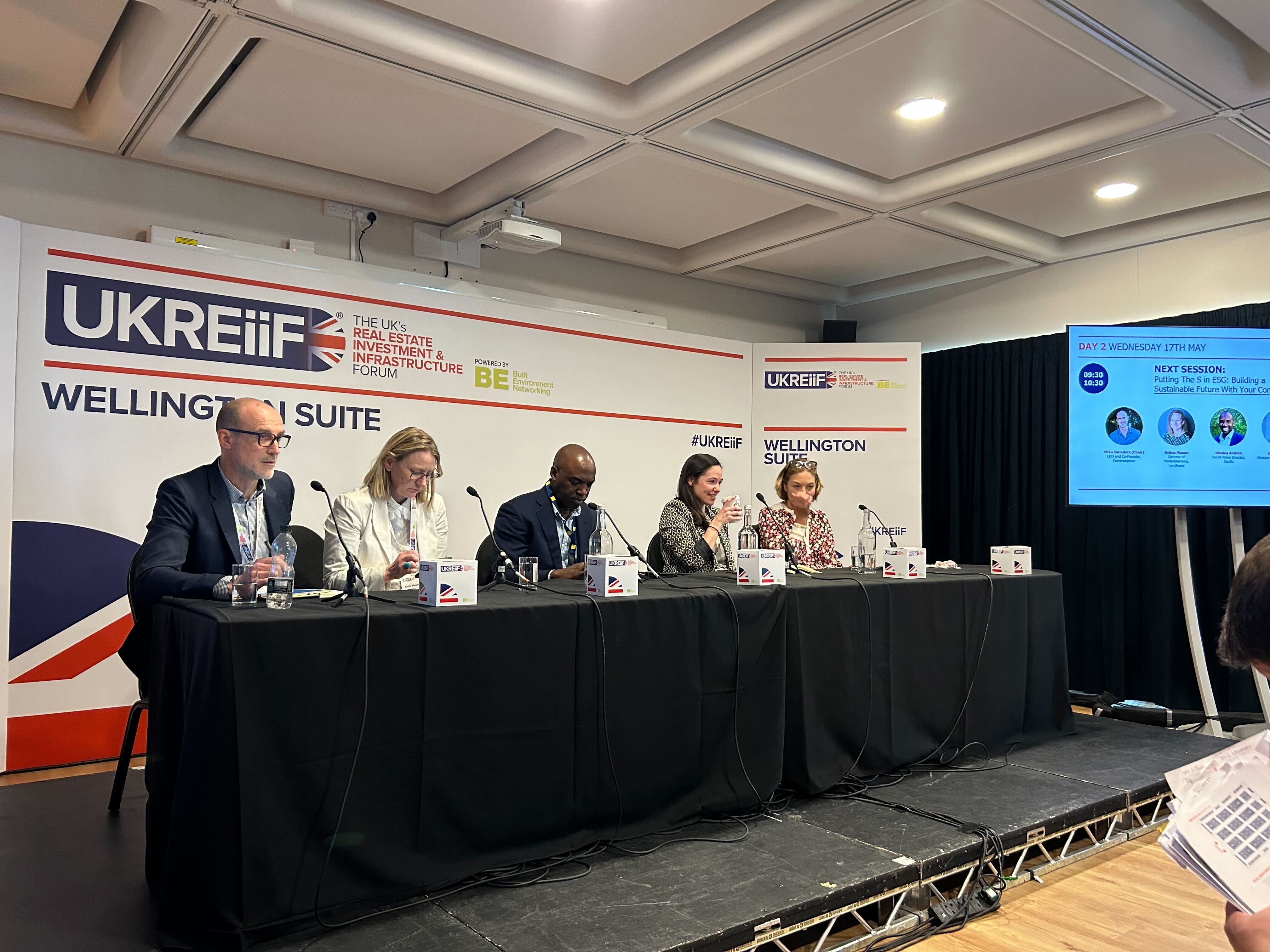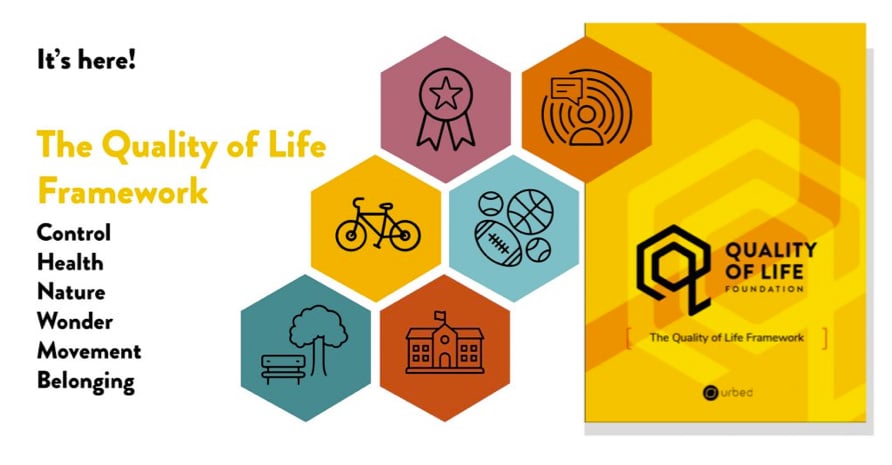Building a Better Future: ESG and its Role in Transforming the Built Environment

By Charlotte Cooper | 29/11/23 09:45
3 min read
ESG: Environmental, Social, and Governance. If you’ve been around our blog before, then you’ve probably heard the term thrown around. Over the past few years, it has become a critical concept in the built environment thanks to a growing emphasis on sustainability, ethics, and corporate responsibility.
While ESG is not a new concept, its importance has escalated due to the urgent need to address climate change and social issues. In the UK, ESG has garnered significant attention, prompting leaders in the built environment to assess their impact on the environment, society, and corporate governance.
At UKREIIF this year, our own CEO Mike Saunders even led a discussion on “putting the S in ESG” where we delved into the complexities of measuring social value and the need for standardized approaches that capture the true essence of people's experiences. (Read about the full session here)

In this blog, we will share a few thoughts on ESG and UK's built environment today.
The impact of ESG on the future of the Built Environment:
The built environment holds immense significance when it comes to ESG priorities. It accounts for a substantial portion of greenhouse gas emissions, energy consumption, and resource depletion. According to The Economist, the world is projected to add floor space equivalent to the size of New York City each month until 2060.* Therefore, understanding and improving the environmental (E) impact of the built environment is crucial for sustainable development.
Another crucial thing to consider is how these new developments will affect the people living in and around them: the social value (S). Creating more space is one thing- but is it being developed with community values in mind? Will these places be used?
One solution is to have a set of metrics to follow. However, ESG metrics are not so easy to come by.
Creating ESG metrics:

The Quality of Life Foundation's social value framework
To make tangible improvements in the built environment, stakeholders such as construction firms, architects, engineers, and contractors need to track and measure specific ESG metrics. While there is currently no standard set of metrics set by the government, there are a few themes that have cropped up when discussing ESG and the built environment:
- Energy Use: Monitoring energy consumption, including electricity, natural gas, and renewables, helps identify areas for energy efficiency improvements.
- Waste Generation: Tracking waste generation and diversion from landfills enables organizations to implement waste reduction strategies.
- Workforce Diversity: Evaluating diversity metrics and fostering inclusive practices can lead to innovative solutions and improved profitability.
- Community Engagement: Corporate philanthropy and volunteer initiatives strengthen community ties and contribute to social responsibility.
- Wellness: Corporate wellness programs positively impact employee health and productivity, reducing absenteeism and improving morale.
- Governance: Strong governance policies ensure transparency and accountability, aligning with self-identified ESG goals.
Again, some of these are hard to measure simply because it’s hard to put pounds and pence saved against values like “community engagement” or “wellness.” These often fall into the S of ESG.
However, companies like the Quality of Life Foundation have created their own social value framework that “sets out practical steps to address the changes that can be made across the development industry to ensure that homes are acquired, planned, built and managed to actively provide a better quality of life for everyone.” Their founder, Sadie Morgan, even spoke on our previously mentioned panel, highlighting how we need to move away from transactional metrics and create “an approach that also measures the impact of our investments on the lives of the people in the places we create.”**
We’ve created several Commonplaces alongside QOLF, like the Community Voices Cardiff project. This website was designed so that the local community can explain what they value in their place and help create a wide-ranging resource of local knowledge.
Harnessing ESG Data for Transformative Change:
ESG implementation is not a one-size-fits-all approach. As mentioned before, there’s no one set of metrics to follow and projects can be wildly different from one another. Each company must take a unique journey toward sustainable and ethical practices and find the metrics that will best fit them and their community. It’s not a simple task, but the effective utilisation of ESG data can serve as a powerful tool for driving transformative change in the built environment, creating better and more positive housing and spaces for the people that live work and play there.
ESG has become a central focus for businesses across various sectors, and the built environment is no exception. Understanding the key facts about ESG and its implications for the built environment is essential for UK companies seeking to be more sustainable, responsible, and ethical in their operations. By setting out ESG metrics to track (and not just with numbers), organisations can make informed decisions, initiate transformative change, and positively impact both their bottom line and the communities they serve.
With the community often at the centre of these discussions, a well-thought-out community engagement strategy as part of a plan to measure social value is crucial. You can gather a range of community data on our platform which helps provide insight and compare your ESG framework against the communities’ priorities. Think about it this way: evaluating social value would be incredibly hard without first engaging the community around it. If you aren't sure where to start, have a chat with one of our experts by clicking below.
**https://www.qolf.org/news-and-updates/measuring-social-value-going-beyond-the-pounds-and-pence/
.png)
